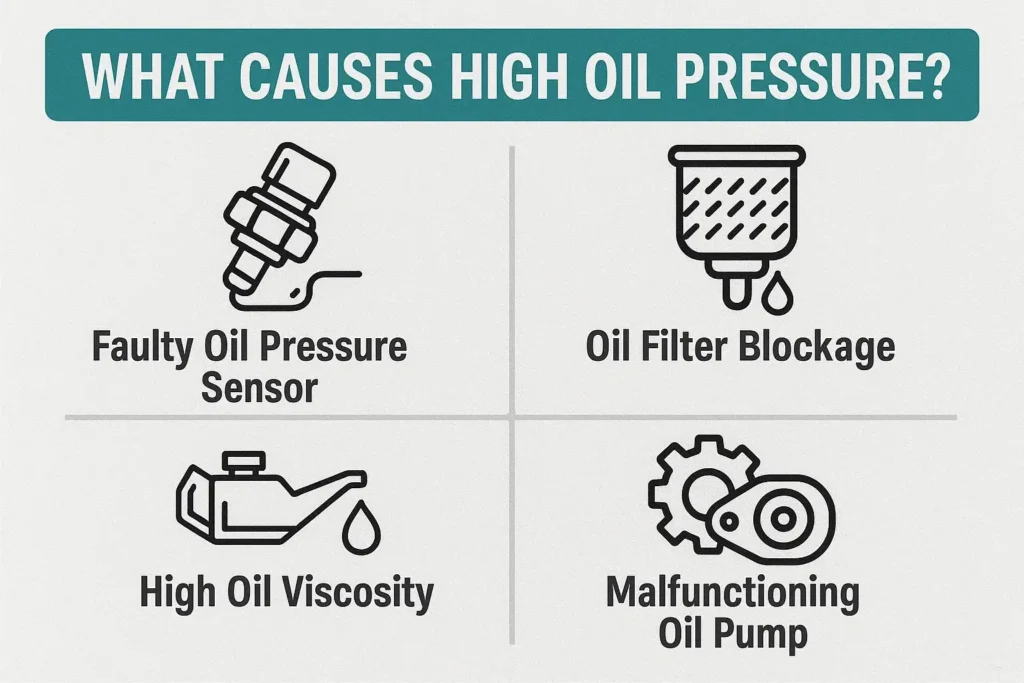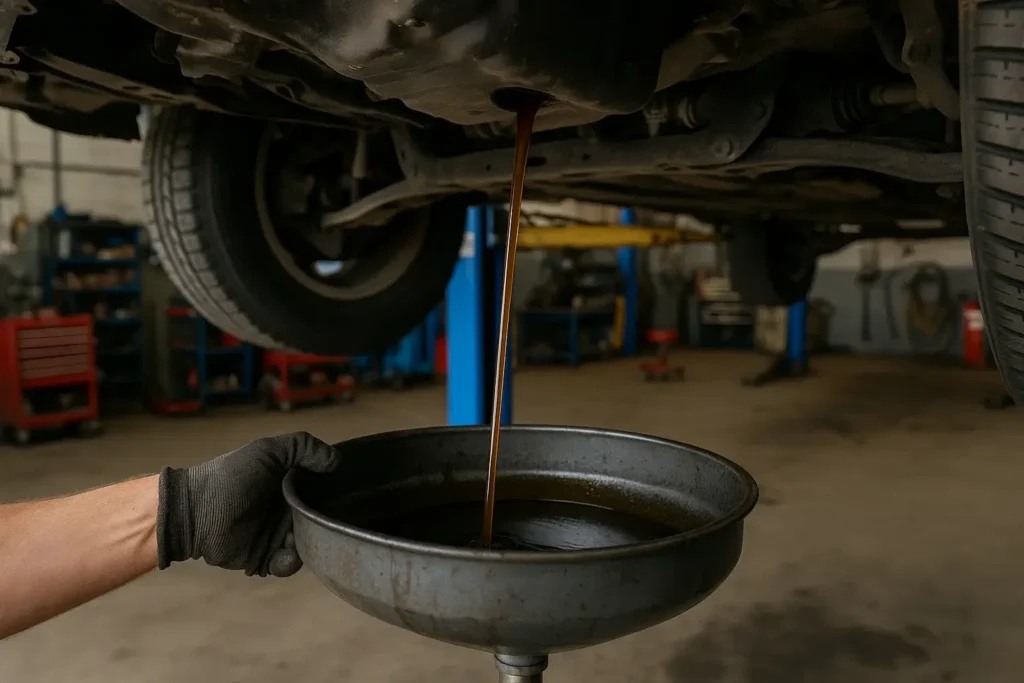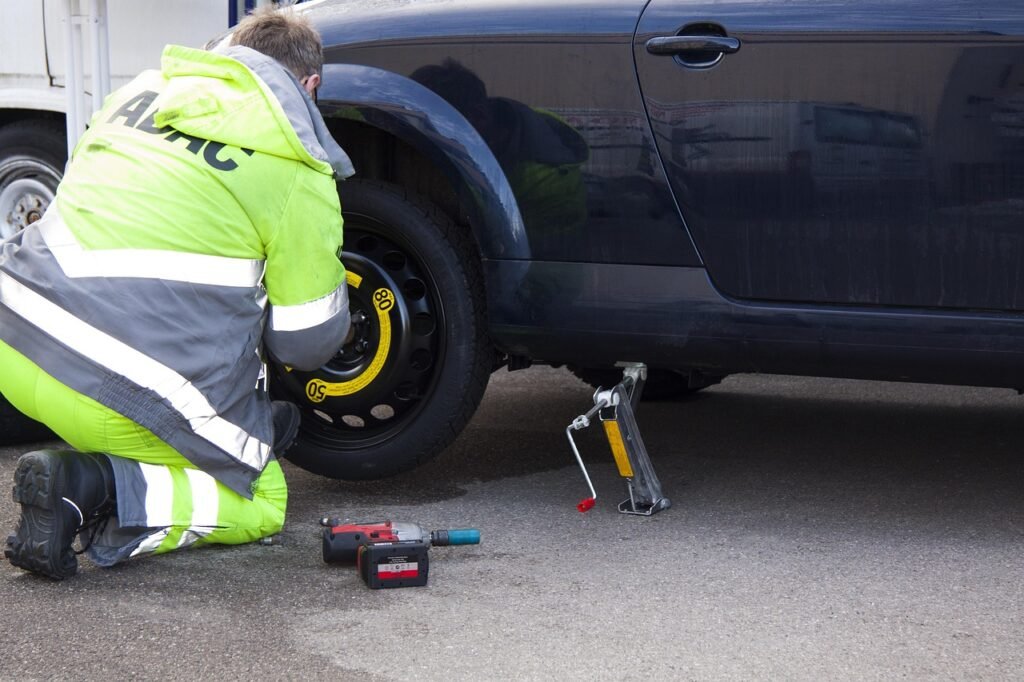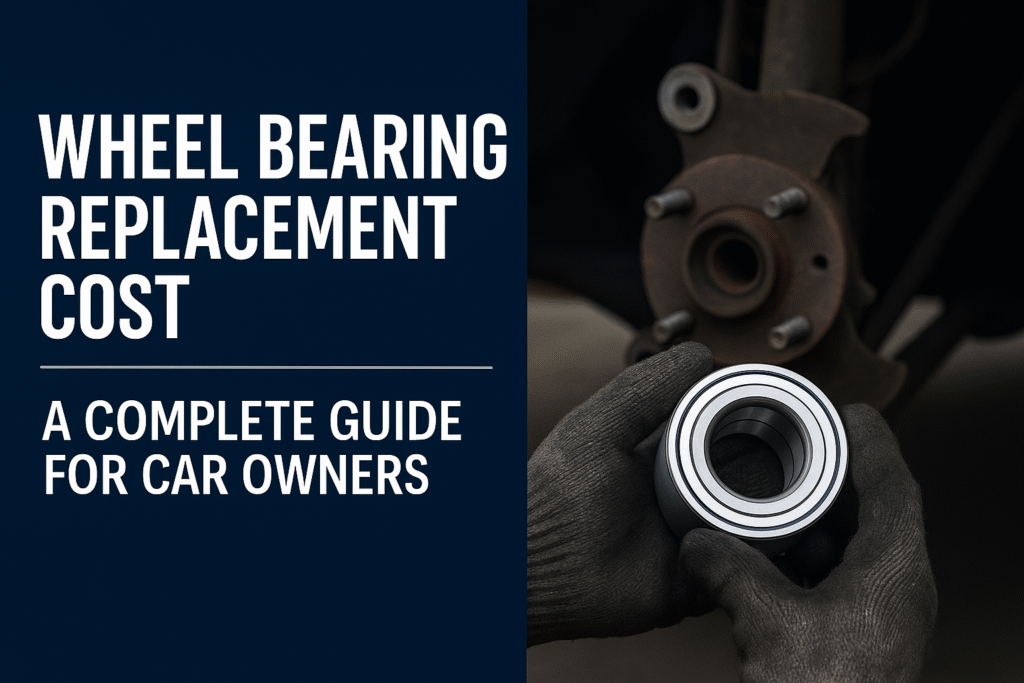High oil pressure in a vehicle may seem like a good thing after all, it suggests that the engine is getting plenty of lubrication, right? Not exactly. While oil pressure is essential to proper engine operation, too much of it can signal underlying problems that could lead to engine damage if ignored.
In this detailed guide, we’ll cover everything you need to know about high oil pressure, including what it means, common causes, how to diagnose it, and what steps you can take to fix it.
What Is High Oil Pressure?
Oil pressure refers to the force with which engine oil is circulated throughout the engine’s lubrication system. It ensures that oil reaches critical components like camshafts, bearings, and lifters, reducing friction and heat buildup.
Normal pressure usually falls between 25 to 65 PSI (pounds per square inch), depending on the vehicle and operating conditions. High pressure typically refers to anything significantly above this range, especially when the engine is fully warmed up.
Why Is Oil Pressure Important?
- It keeps metal parts from grinding
- It cools engine components
- It removes debris and carries it to the oil filter
However, when oil pressure becomes too high, it can:
- Stress oil seals and gaskets
- Reduce oil flow to certain components
- Lead to premature wear or engine failure
Symptoms of High Oil Pressure
Recognizing the signs can help you intervene before serious damage occurs.
Dashboard Oil Warning Light
An illuminated or flickering oil light may indicate a pressure imbalance either too low or too high. Some vehicles even have digital pressure gauges for more precise readings.
Engine Noise (Ticking or Knocking)
When oil isn’t flowing correctly, it can cause lifters or valves to operate noisily, especially at startup or high RPMs.
Oil Leaks or Blown Gaskets
Excessive pressure puts stress on seals and gaskets. If oil is leaking around the valve cover or oil pan, high pressure might be the culprit.
Hard Starting or Rough Idling
Oil that’s too thick under high pressure might resist circulation, making engine startups harder and idling rougher.
What Causes High Pressure?
Understanding the root causes is essential for proper diagnosis and repair.
1. Cold Engine Starts
Cold oil is thicker and doesn’t flow easily. This increases pressure temporarily, especially in colder climates. While this is usually normal, extended high pressure during warm-up can be problematic.
2. Wrong Oil Viscosity
Using a thicker oil than what your engine requires (e.g., 20W-50 instead of 5W-30) increases resistance and boosts pressure. Always consult your vehicle’s owner’s manual for the recommended SAE viscosity.
3. Faulty Oil Pressure Sensor
A bad oil pressure sending unit can falsely signal high oil pressure. A manual pressure gauge is often needed to confirm the true reading.
4. Malfunctioning Pressure Relief Valve
Most oil pumps include a pressure relief valve. If it sticks closed, pressure can spike abnormally and damage engine components.
5. Clogged Oil Filter or Oil Passages
Debris and sludge can restrict oil flow, forcing the pump to work harder and build more pressure. Overdue oil changes or poor-quality filters can contribute to this.

Risks of Driving
Operating a vehicle while have this issue isn’t just a mechanical annoyance—it’s a risk. Here’s why:
- Seal and Gasket Damage: It can rupture seals, leading to external leaks or internal oil loss.
- Oil Starvation: Ironically, high pressure can reduce oil flow in small passages, causing critical components to wear prematurely.
- Engine Overheating: Reduced lubrication increases friction and heat.
- Complete Engine Failure: Over time, ignored high oil pressure can destroy internal components.
Bottom line? If you suspect high oil pressure, don’t ignore it.
How to Diagnose?
Proper diagnosis is key to effective repairs. Here are proven ways to determine if your oil pressure is genuinely high:
1. Use a Mechanical Pressure Gauge
This is the gold standard. A manual test bypasses electronic sensors and gives a direct pressure reading at the block.
2. Check for OBD-II Trouble Codes
Codes like P0521 (Oil Pressure Sensor Range/Performance) or P0522 (Low Voltage) may indicate issues with the pressure sensor or actual pressure irregularities.
3. Compare Readings: Cold vs. Warm Engine
Pressure should be higher when the engine is cold, then drop as it warms. If it remains high when fully warm, there’s likely a problem.
Interesting read: How a Fuel Pressure Regulator Works
How to Fix High Oil Pressure – Step-by-Step Guide
Once diagnosed, here’s how to tackle the problem:
1. Replace Oil and Filter With Correct Viscosity
- Drain and replace engine oil with manufacturer-recommended viscosity
- Use high-quality filters to avoid flow restriction
2. Replace the Pressure Sensor
- A $20–$50 sensor can save hundreds in unnecessary repairs
- Use Teflon tape and a torque wrench for proper installation
3. Check and Replace the Pressure Relief Valve
- May require removing the oil pump
- If stuck or corroded, it must be cleaned or replaced
4. Clean the Oil Passages or Use Engine Flush (Cautiously)
- Only use engine flush if your engine tolerates it
- Follow with an oil and filter change
⚠️ When to Call a Mechanic:
If you’re unsure or if the problem persists after basic steps, seek professional diagnostics. Internal engine work should never be DIY unless you’re an experienced tech.
Preventing High Oil Pressure in the Future
The best fix is prevention. Here’s how:
- Use the Correct Oil Type: Follow OEM viscosity guidelines
- Change Oil Regularly: At least every 3,000–7,500 miles depending on vehicle and oil type
- Use Quality Filters: Cheap filters can restrict flow
- Warm Up Your Engine in Cold Weather: Give oil time to circulate before revving
Conclusion
High oil pressure isn’t something to ignore. It can be a symptom of something as simple as the wrong oil or as serious as a failing oil pump or clogged passage. Addressing the issue early can save thousands in repairs and even prevent complete engine failure.
By understanding the causes, symptoms, and solutions, you’re better equipped to maintain your vehicle and keep it running smoothly.
FAQs
What causes high oil pressure in a car engine?
Common causes include a clogged oil filter, a stuck pressure relief valve, excessive engine sludge, or using the wrong oil viscosity for your vehicle.
Is high oil pressure bad for my engine?
Yes. Prolonged high oil pressure can damage seals, gaskets, and bearings, leading to leaks and potentially severe engine wear or failure.
Can a bad oil pump cause high oil pressure?
While rare, a malfunctioning oil pump can contribute to high oil pressure if it’s pumping too aggressively or if the pressure relief valve inside it fails.
How do you fix high oil pressure?
Fixing high oil pressure usually involves changing the oil and filter, checking the pressure relief valve, and ensuring you’re using the correct oil viscosity recommended by the manufacturer.



